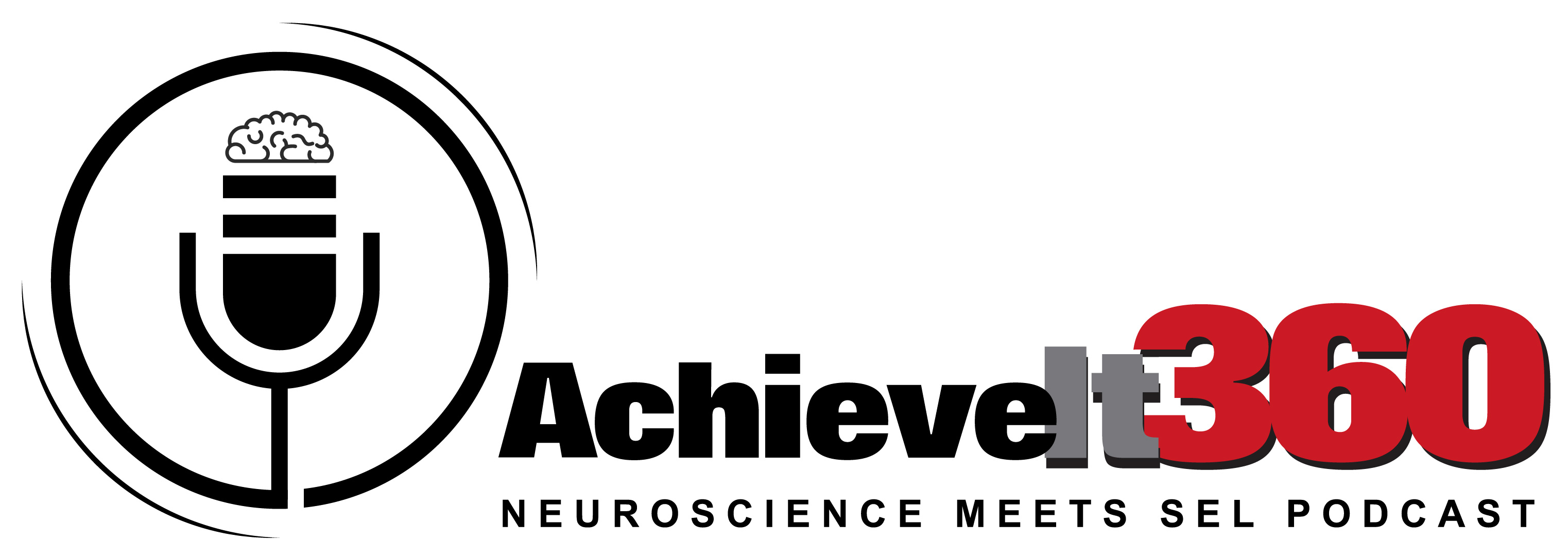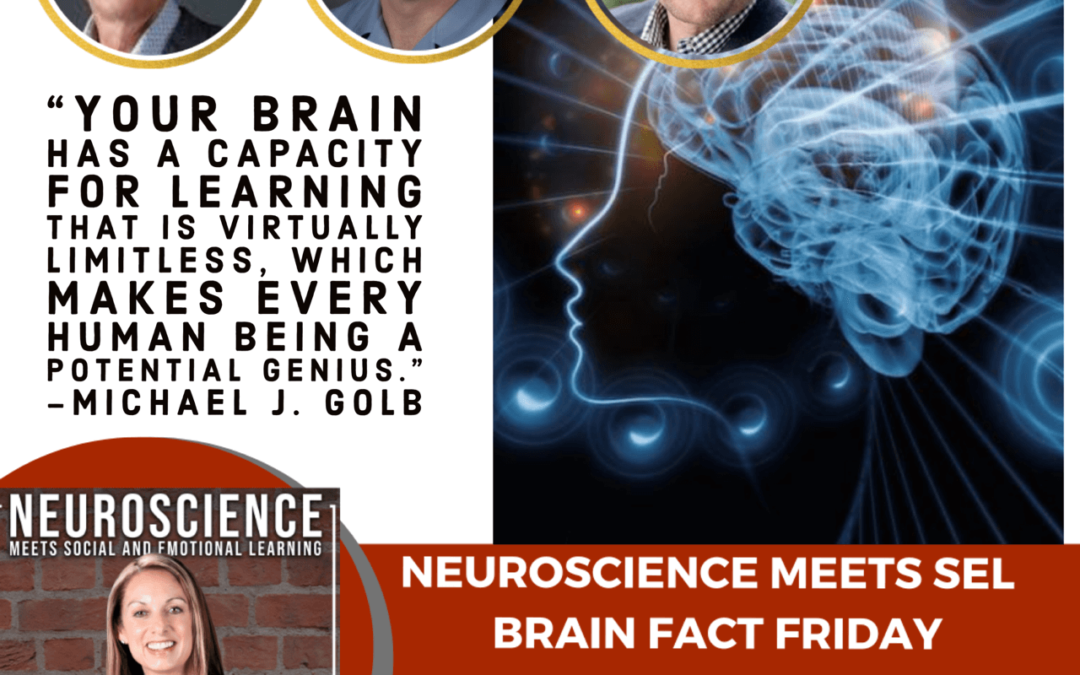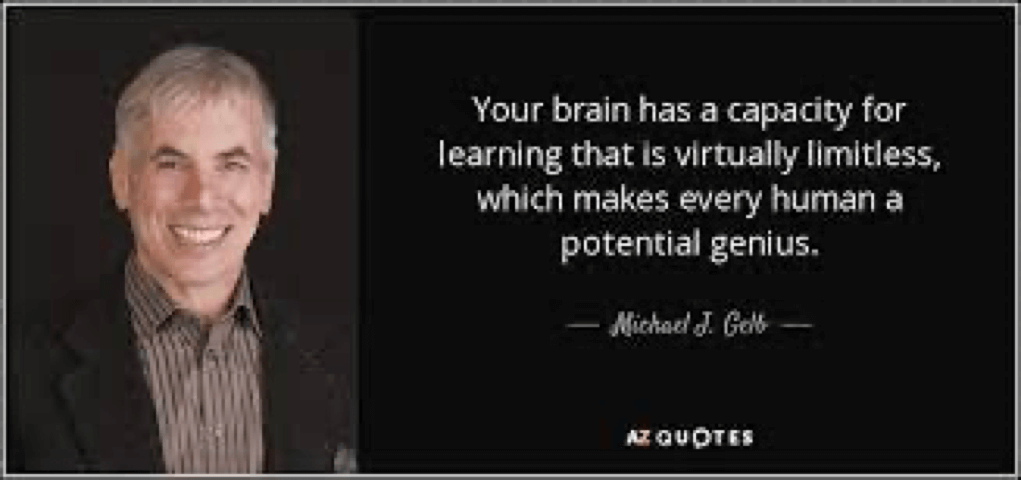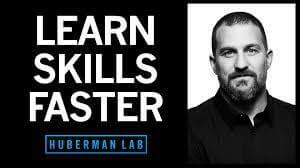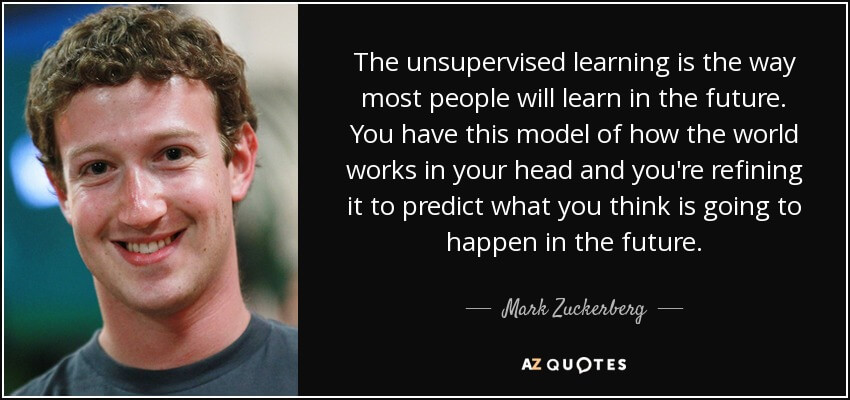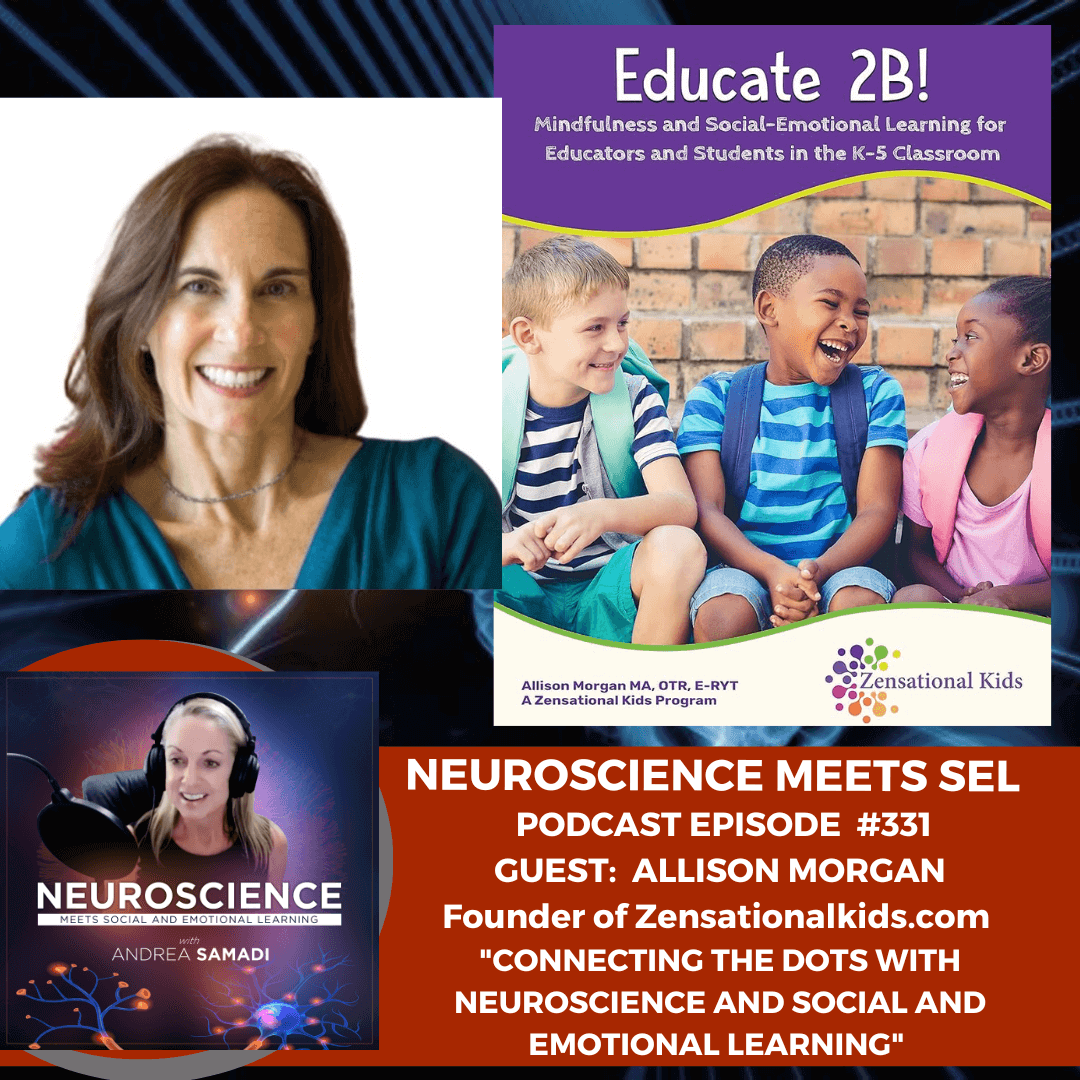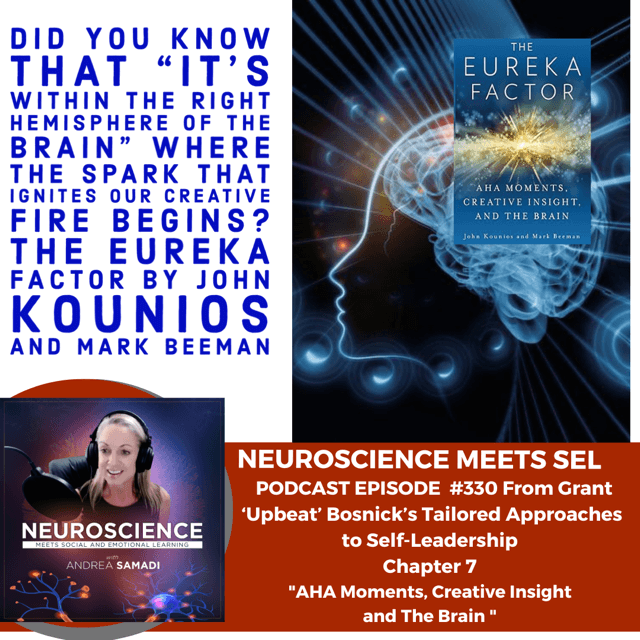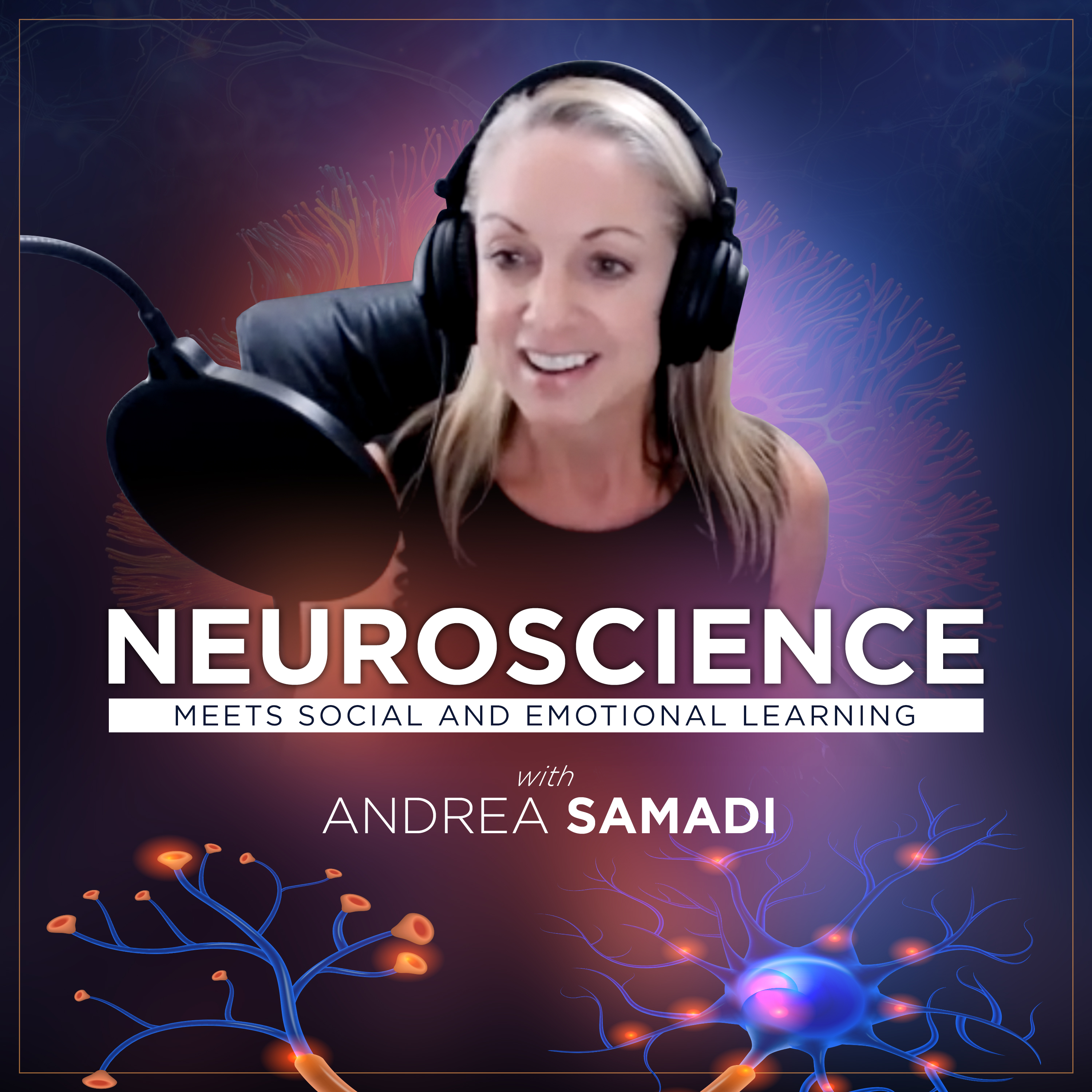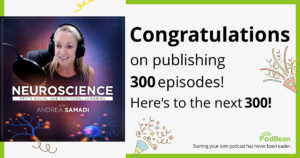“The brain has a capacity for learning that is virtually limitless, which makes every human being a potential genius.” Michael J. Golb
I want to welcome you back to The Neuroscience Meets Social and Emotional Learning Podcast where we bridge the gap between theory and practice, with strategies, tools and ideas we can all use immediately, applied to the most current brain research to heighten productivity in our schools, sports environments and modern workplaces. I’m Andrea Samadi and launched this podcast almost 4 years ago, to share how important an understanding of our brain is for our everyday life and results.
For today’s episode #276, we will go back to one of our early episodes, #119[i] on “The Key Ingredients of Learning with the Brain in Mind” and take a look at what I picked out as the key ingredients for learning back then, to see how NEW research has informed this area today. When I went back to review this episode, there were some ingredients in this “learning” equation that we’ve talked about often on this podcast, and the new research I found was eye-opening. The new research took what we covered so beautifully on those early episodes, to a whole new level, showing me why it’s important to go back to the basics and see what strategies are effective, and why. Before we get to what’s NEW, let’s look back at where our podcast began, and what we were focused on, with learning with our brain in mind.
Learning with the Brain in Mind
We can go right back to our very first interview EPISODE #3[ii] with Ron Hall, from Valley Day School, who mentioned how things changed for him when he met Horacio Sanchez and began teaching with brain science in mind. This is the whole reason why we are going back to the basics this season, as we connect the new research to our past episodes, to strengthen where we all are in our process of building a stronger, more resilient 2.0 version of ourselves in 2023 and beyond. It’s always easy to look back, and connect the dots[iii] like Steve Jobs’ famous quote, and trust that these dots will connect again in the future, with new meaning that’s evolved with time, knowledge and understanding.
John Hattie’s Research:
As I glanced at our earlier interviews, Greg Wolcott from EPISODE #7 on “Building Relationships in Today’s Classrooms” was our next guest in this learning equation, as he was the first guest to mention that his work and book, Significant 72[iv], was inspired by New Zealand Professor John Hattie. John Hattie became known for his two books Visible Learning and Visible Learning for Educators that focused on teaching strategies that have a high probability of being effective.
You can read directly from John Hattie himself, as he connects his dots looking backwards, where he says he believes he got some parts wrong with his approach to learning in the classroom. He shares he’d like to stop looking at the strategies teachers are using and look closer at the impact we have on our students and how they learn best when he reflects that “we need to switch from saying (I care about how you teach), to saying (I care about the impact of your teaching).”[v] Hattie goes on to talk about the criticism he faced with the term “visible learning” because learning isn’t visible at all.
As John Hattie now prepares to release Visible Learning: The Sequel[vi] this March, 15 years after his first book that sold out in days of its release and was described as “teaching’s Holy Grail” he’s returning to his ground-breaking work, with a new angle. Like the direction we are taking with this podcast, going back to the basics, this is what Professor John Hattie is doing with his next book where he not only looks at WHAT works best with learning, as he shares the research is his new that is now informed by more than 2,100 meta-analyses (more than double that appeared in his first book, drawn from more than 130,000 studies, and has involved more than 400 million students from all around the world.
He then asks “WHY” did these strategies work so well, with some thoughts of how we can improve learning, using current and future research.
I remember back to my early days of teaching when we were observed by our school principal, and given feedback for how effective our lessons were. I remember thinking this process was such a waste of time as the students were behaving differently knowing their teacher was being evaluated. I knew that there wasn’t much learning happening other than finding a way to beat the system to have my students behave in this artificial environment.
True learning, Hattie points out, happens when a teacher has to adapt a lesson, as they notice the students who might be missing the point, and need a new way to learn. Hattie noticed:
Professor John Hattie[vii] take this new knowledge and tells us that Australia has now gone with a new method of observation where they “ask expert teachers to consider a lesson they are planning to deliver, and then record themselves talking through their planning. Then the lesson is filmed. The expert teacher then records themselves again, explaining the decisions they made in the moment. The two recordings are then layered over the video. This allows those who watch the videos to hear what the teacher is thinking in real time.” (John Hattie, Why Teaching Strategies Don’t Make You an Excellent Teacher). Hattie believes that this is where the research is turning to, with more thinking aloud and dialogue around learning, and he goes on to project there will be “a massive breakthrough in automation of classroom observation and teachers will improve because of it.”[viii]
I can already see useful technology emerging in the corporate workplace that uses Artificial Intelligence to score a sales employee on their presentations, providing immediate feedback on specific metrics, including content, articulation, and even picking out keywords to help improve presentation skills.
The future of learning is evolving, and it undeniably involves an understanding of our brain.
Learning with the Brain in Mind:
Friederike Fabritius on EPISODE #27[ix] was next to contribute to our formula of learning and “Achieving Peak Performance” as we began to connect the neurochemicals involved in those high levels of achievement where peak performance or flow occurs.
Dr. John Dunlosky’s Research
Our next guest to help us to decipher this formula for learning was Kent State University’s Dr. John Dunlosky, from EPISODE #37[x] on “Improving Student Success: Some Principles from Cognitive Science.” I’ll never forget when the lights started to go on for me, when I first heard Dr. Dunlosky speak in 2016 of an Edweek Webinar about “deliberate practice” being one of the most effective learning strategies vs cramming to learn something new (whether a new skill in the classroom, or a sport). This led us to EPISODE #38[xi] on “The Daily Grind in the NHL” with Todd Woodcroft, who at the time was an Assistant Coach with the Winnipeg Jets. His episode covered the importance of “the daily grind” or doing the same things every day, for predictable results in the pro sports world.
The Key Ingredients of Learning:
I could keep going through our episodes, and connecting the guests who spoke about the key ingredients of learning, but as we move towards the current research, I want to start with what we first identified with learning with the brain in mind.
On today’s Episode #276 on “Looking Back at the Key Ingredients of Learning” we will cover
✔ A review of the key ingredients of learning from our early episodes (that include motivation and repetition).
✔ A look back on John Hattie’s Research with his ground-breaking book Visible Learning as he prepares to release Visible Learning: The Sequel to see “What’s New” when it comes to teaching and learning in the classroom.
✔ What is NEW with Learning and the Brain? (Dr. Andrew Huberman).
✔ How Can We Learn NEW Skills Faster with the Brain in Mind: A 3-STEP PROCESS
✔ Using Repetition and the NEW Research to Learn NEW Skills Faster: A 4-STEP PROTOCOL
✔ Thoughts on the Future of Learning.
What Dr. Huberman’s Research Says About Learning NEW Skills Faster:
When I looked up what’s new in this area, I didn’t need to go anywhere else, other than with Stanford Professor, Dr. Andrew Huberman and his Huberman Lab Podcast. I found two very thorough episodes that were similar in content, both close to 2 hours in length. You can access each of his episodes by clicking on the link in the show notes, but for today’s episode, I wanted to take the research, and tie it to what we already know about learning, with some steps for how we can use this research in the future.
I took his Podcast #20 on How to Learn Skills Faster[xii] that was published a year ago, in 2022, a year after I took a stab at explaining the key ingredients of learning. I remember listening to this episode while exercising and thinking I really needed to take notes, as he went into depth on the science behind acquiring new skills, affirming that we had uncovered some of the most important ingredients, specifically the repetition of a new skill and the motivation. I remember thinking it would have been good to know this as a former PE teacher, and I’ll be sure to copy my friend Dan Vigliatore[xiii] who trains our next generation of educators with what’s new and innovative for PE teachers in the classroom at York university in Toronto, or even just thinking back over those early episodes, it was clear why doing things a certain way (whether it’s learning a new skill in the classroom, for athletic performance or in the workplace) that tapping into the Science of Learning, improving what we already know works in the learning process, will take everything to a deeper level for all of us.
According to Dr. Huberman: How to Learn Anything Faster:
STEP 1: Open Loop vs Closed Loop
Dr. Huberman explains there are 2 types of skills: open loop and closed loop skills and you’ll want to be able to distinguish between these skills.
Open Loop: is a skill that when it’s completed, you know if you did it right, or not. It would be like if a gymnast is doing a back flip. They either do the back flip, or they mess it up. The only way to do it correctly, is to attempt it again if they messed up something and were scared halfway through. Or like throwing darts at a dart board. If the darts go on the ground, you missed the skill and the only way to get the skill, is to try it again. Or a free throw in basketball. I think we’ve got the point of this skill type. We can either do the skill, or we don’t. This is an open loop.
Closed Loop: is a skill that allows for correction while performing the skill, like if you were running and your coach is giving you tips on your stride or something that you change and improve along the way, or if you were playing the drums, and you were given instruction on how to speed up or slow down your tempo.
STEP 2: Ask “what should I focus my attention on?”
Next, Dr. Huberman says we ask ourselves “what should I focus my attention on” and there are three places. It’s either going to auditory attention (you are listening for something), visual attention (you are watching something) or it’s proprioception (sometimes known as our 6th sense) where we think about where our limbs are in relation to our body as we are performing a certain skill (like being able to walk or kick without looking at your feet).
STEP 3: Your Neurology Will Take Care of the Rest
This is where things get exciting, as Dr. Huberman goes into the in-depth explanation of how learning something new translates within certain parts of our brain. Without attempting to teach what he explains so well, I’m going to break it down so we can understand the basic ideas that he covers.
Central Pattern Generators: exist in our spinal cord and it’s this part of the brain that generates repetitive movements with skills we have learned. Things like walking, running, swimming, cycling, are all controlled by this part of the brain. The CPG also controls already learned behavior. When you have developed a certain skill, this part of the brain is taking over and controls the movement. I thought about something Friederike Fabritius said in her first interview with me when we were talking about her book, The Leading Brain and I asked her about something she wrote about on this topic of understanding learned behavior and how it shows up in our brain after years of repetitive practice.
She gave 2 examples of people who didn’t rely on their conscious thinking brain, but they used their unconscious brain to increase the speed, efficiency and accuracy of their performance. The first example she used was with Sully Sullenberger’s quick thinking with his emergency landing of that plane in the Hudson River and the other was with Wayne Gretzky, who used his unique “hockey sense” to “skate where the puck will be, not where it is.” Friederike explains in her book The Leading Brain that “there’s a common misconception that intuitive decisions are random and signify a lack of skill, the exact opposite is true. Intuitive decisions are often the product of years of experience and thousands of hours of practice. They represent the most efficient use of your accumulated expertise.”[xiv] So, if you are executing a skill that you’ve spent years learning, you will be activating this part of your brain, the Central Pattern Generator.
Let’s say you haven’t spent years learning a sport. Like for me, with golf. If I swing a golf club, the parts of my brain that will be working are much different than the brain of a golf pro who would be using the CPG. I’d be using the next part of our brain, the Upper Motor Neurons in our cortex, that are the neural pathways that control movement, and are involved with things like picking up a pen, or a deliberate action, like swinging a golf club. This part of our brain is important to note in the visualization process, with skill building, that we will touch on in a minute.
Then there’s the Lower Motor Neurons in our spinal cord that send messages to our muscles that causes the muscles to move.
When it comes to skill acquisition, I’m sure you’ve heard of the 10,000 hour rule. Someone just said it to me the other day, and while it does explain that work is involved with learning a new skill, it doesn’t explain HOW we learn that new skill, using science.
The secret to NEW skill acquisition Dr. Huberman says is not about the hours you put in, it’s about the repetition. This made me think back to those early episodes where we took Dr. John Dunlosky’s research, connected it to what we know works in the sports world, with the daily grind that’s required for pro sports athletes, and now Dr. Huberman adds something new to this equation.
He says of course “there’s a connection between time and repetition, but there’s new research that states that it’s important what you are focused on as you learn a new skill, and if you can adjust the number of repetitions that you do, adjusting your motivation for learning, and you can vastly accelerate learning.”[xv] He went on the share study after study that backed this idea up, but without going into the weeds with the research, he says the protocol for learning any skill faster, something he says has been dubbed online as “The Super Mario Effect” or “The Test Tube Experiment” with mice or rats has to do with stimulating a certain brain area that can lead to vastly accelerating learning. He goes into where he has seen this being tested with Lewis Howes on his podcast “How to Learn Anything Fast”[xvi] where Lewis Howes almost fell off his chair with what he was learning. The issue with this method is that it’s being tested now in military environments, and not something that any of us could use for immediate results, as we’d have to drill holes in our skull to stimulate a certain part of the brain to get these accelerated learning results (and they are doing this in certain places).
But what can we do right away with this research?
Dr. Huberman says that “whatever it is we are learning, that we are to perform as many repetitions per unit of time as we possibly can, even if we make errors” and this repeat of performance, even if there are errors will help you to accelerate skill learning.” So, we did get the ingredients of learning correct with the emphasis on repetition, but I didn’t know that the research now shows that making errors would promote plasticity in the brain and accelerate the learning process.
Here’s a 4 STEP Protocol to Help You to Learn Faster with Brain Science in Mind
- Get as many repetitions in per session. (whether a sport or even going back to Dr. Dunlosky with his importance of spaced repetition).
- Pay attention to the errors you make and don’t worry about bad habits getting engrained. You will know the right actions vs the ones you want to discard.
- Know that neurochemicals are being created from the successful repetitions.
- After the session: REST. DO NOTHING. Don’t look at your phone for 1-5 minutes to allow the neurons in the brain to replay the sequences you practiced. The errors will be eliminated and the correct sequence will be played back.
What is interesting with Dr. Huberman’s research is that he noted that when you sit and let the brain go idle after this repetition, that the brain will play the sequences backwards as it consolidates learning (and he says they aren’t sure why) but the brain in sleep, plays the sequence forward.
He also covered using a metronome (that tool we know helps you to learn to play the piano) as a powerful tool to increase the number of repetitions. I thought about how I would use this strategy, and think it makes the most sense for sports (thinking of when I was a PE teacher of how I could have used this information), or even apply it to my girls who practice gymnastics, and share with them that it matters how many turns they take to practice their skill. I asked them “how many times do you practice a back flip in one 4-hour practice” and they didn’t have a number for me. If they are messing around in practice, they are taking away from others getting these higher repetitions, as well as themselves. I know their coaches know this, but I’m hoping that the girls understand why these focused repetitions area important for their results and skill learning.
If I were a coach, with this brain science in mind, I’d have athletes count the number of reps they were doing with a certain skill, in a certain time period and see how each practice they could increase this number.
What Does the Research Say About Visualization and Learning:
I’ve spent a lot of time covering Visualization on this podcast, as it’s a part of my daily routine, so of course I wondered what Dr. Huberman and the research says about adding mental rehearsal to your learning.
While he did say that “visualization is a powerful tool and that it works” he added “not as good as the actual experience” of doing the actual physical activity. Dr. Huberman says that “closing your eyes and thinking about a sequence of movements and visualizing it in your mind’s eye creates the activation of the upper motor neurons that’s very similar, if not the same as the actual movement.” He said that visualization is a good supplement to your learning routine, but not a replacement.
REVIEW AND CONCLUSION:
To review and conclude this episode on the ingredients of learning, I think we uncovered the main ingredients from our episode 2 years ago (repetition and motivation) that’s crucial for learning, but Dr. Huberman’s research on making sure we get as many repetitions as we can per session, even if we make mistakes in the process, did help me to look at learning with a new lens.
I also couldn’t forget how he said the military is experimenting with stimulating parts of the brain to accelerate learning and know that years down the line, it might be easier for us to learn a new language, or master a new skill in a sport, with advancements in our understanding of brain science.
I hope that this episode helped you to think of what else you could do to accelerate learning for your students in the classroom, whether it’s with John Hattie’s reflections of “thinking through” an effective lesson, or with the tried and true strategies of Dr. John Dunlosky of spaced repetition that have proven to accelerate results in sports and the classroom, or even Dr. Huberman’s idea of increasing the amount of repetitions per unit of time, without worrying about errors.
This episode on learning made me think of more questions than I have answers for. It was only two years after we wrote ep 119, that Dr. Andrew Huberman released his new research, and many studies that have emerged about how to accelerate learning with repetition, and how our brain is involved in this process.
15 years after Professor John Hattie released his ground-breaking Visible Learning book in the field of education, that he reflects back now on AI for classroom observation.
I’ll close with a quote from Mark Zuckerberg who says that “unsupervised learning is the way that most people will learn in the future. You have this model of how the world works in your head and you’re refining it to predict what you think is going to happen in the future.”
This makes me wonder:
- What will we uncover 3 years from now?
- Will we ever be able to find the science that gives us answers to other ways we can learn, like finding answers from our dream world?
- Will we be able to predict our future somehow like Mark Zuckerberg suggested by refining something in our head?
While Dr. Huberman says that visualization is a powerful tool that works, he still says that it doesn’t work as well as actually doing the skill. He has the data to prove this today but will we uncover something about our brain and places we can stimulate it without having to drill open our skull in the future that could improve our effectiveness, even if it’s a few percentages of improvement?
Maybe tweaking something with our visualization process could unlock some of the secrets Jose Silva unlocked in his Silva Mind Control Method[xvii] that we dove deep into at the end of last year?
One thing I know for sure is that I’ll never stop asking questions and searching for answers that can help us to all be a stronger more resilient 2.0 version of ourselves.
What about you?
What questions do you have? How has science informed your learning?
I’d love to hear your thoughts on the future of learning…
And with that I’ll close out this episode and see you next week as we revisit EP #122 on “Transforming the Mind Using Athletics and Neuroscience”[xviii]
See you next week!
FOLLOW ANDREA SAMADI:
YouTube Channel: https://www.youtube.com/c/AndreaSamadi
Website https://www.achieveit360.com/
LinkedIn: https://www.linkedin.com/in/samadi/
Facebook: https://www.facebook.com/Achieveit360com
Neuroscience Meets SEL Facebook Group https://www.facebook.com/groups/2975814899101697
Twitter: https://twitter.com/andreasamadi
Instagram: https://www.instagram.com/andreasamadi/
REFERENCES:
[i]Neuroscience Meets Social and Emotional Learning Podcast EPISODE #119 on “The Key Ingredients of Learning with the Brain in Mind” https://andreasamadi.podbean.com/e/brain-fact-friday-on-the-key-ingredients-of-learning-with-the-brain-in-mind-with-andrea-samadi
[ii]Neuroscience Meets Social and Emotional Learning Podcast EPISODE #3 with Ron Hall from Valley Day School on “Launching Your Neuro-educational Program” https://andreasamadi.podbean.com/e/interview-with-ron-hall-valley-day-school-on-launching-your-neuroeducational-program/
[iii] Steve Jobs https://www.brainyquote.com/quotes/steve_jobs_416875
[iv] Greg Wolcott Significant 72 https://www.significant72.com/
[v] John Hattie: Why Teaching Strategies Don’t Make You an Expert Teacher by John Hattie Jan 11th, 2023 https://www.tes.com/magazine/teaching-learning/general/john-hattie-visible-learning-teaching-strategies-dont-make-you-expert
[vi] Visible Learning: The Sequel by John Hattie Published by Routledge, March 20, 2023 https://www.routledge.com/Visible-Learning-The-Sequel-A-Synthesis-of-Over-2100-Meta-Analyses-Relating/Hattie/p/book/9781032462035
[vii] IBID
[viii] IBID
[ix] Neuroscience Meets Social and Emotional Learning Podcast EPISODE #27 with Friederike Fabritius on “The Recipe for Achieving Peak Performance” https://andreasamadi.podbean.com/e/pioneer-in-the-field-of-neuroleadership-friederike-fabritius-on-the-recipe-for-achieving-peak-performance/
[x]Neuroscience Meets Social and Emotional Learning Podcast EPISODE #37 “Dr. John Dunlosky on “Improving Student Success: Some Principles from Cognitive Science” https://andreasamadi.podbean.com/e/kent-states-dr-john-dunlosky-on-improving-student-success-some-principles-from-cognitive-science/
[xi]Neuroscience Meets Social and Emotional Learning Podcast EPISODE #38 with Todd Woodcroft on “The Daily Grind in the NHL” https://andreasamadi.podbean.com/e/assistant-coach-to-the-winnipeg-jets-todd-woodcroft-on-the-daily-grind-in-the-nhl/
[xii] How to Learn Skills Faster by Dr. Andrew Huberman, EPISODE #20 https://www.youtube.com/watch?v=xJ0IBzCjEPk
[xiii] https://twitter.com/PhysEdDynasty
[xiv] The Leading Brain, Page 148, Friederike Fabritius https://www.amazon.com/Leading-Brain-Neuroscience-Smarter-Happier-ebook/dp/B01HCGYVM2/ref=sr_1_1?gclid=CjwKCAiAr4GgBhBFEiwAgwORreGYXo-LXa5995xdbpY7AiCFCyjNHxQ842EYgZOf2uGIaCZmtq3T7xoCGc4QAvD_BwE&hvadid=174274111864&hvdev=c&hvlocphy=9030068&hvnetw=g&hvqmt=e&hvrand=1212127332165576286&hvtargid=kwd-262053540231&hydadcr=22536_9636732&keywords=the+leading+brain&qid=1677786313&sr=8-1
[xv] How to Learn Skills Faster Dr. Andrew Huberman PODCAST EPISODE #20 https://www.youtube.com/watch?v=xJ0IBzCjEPk
[xvi] Lewis Howes and Dr. Andrew Huberman on “How to Learn Anything Fast” https://www.youtube.com/watch?v=ADygLWbL2M4
[xvii]Neuroscience Meets Social and Emotional Learning Podcast EPISODE #261 on “Applying the Silva Method for Improved Intuition, Creativity and Focus” https://andreasamadi.podbean.com/e/a-deep-dive-with-andrea-samadi-into-applying-the-silva-method-for-improved-intuition-creativity-and-focus-part-1/
[xviii] Neuroscience Meets Social and Emotional Learning Podcast EPISODE #122 on Transforming the Mind Using Athletics and Neuroscience https://andreasamadi.podbean.com/e/brain-fact-friday-on-transforming-the-mind-using-athletics-and-neuroscience/
Podcast: Play in new window | Download
Subscribe: Apple Podcasts | RSS
